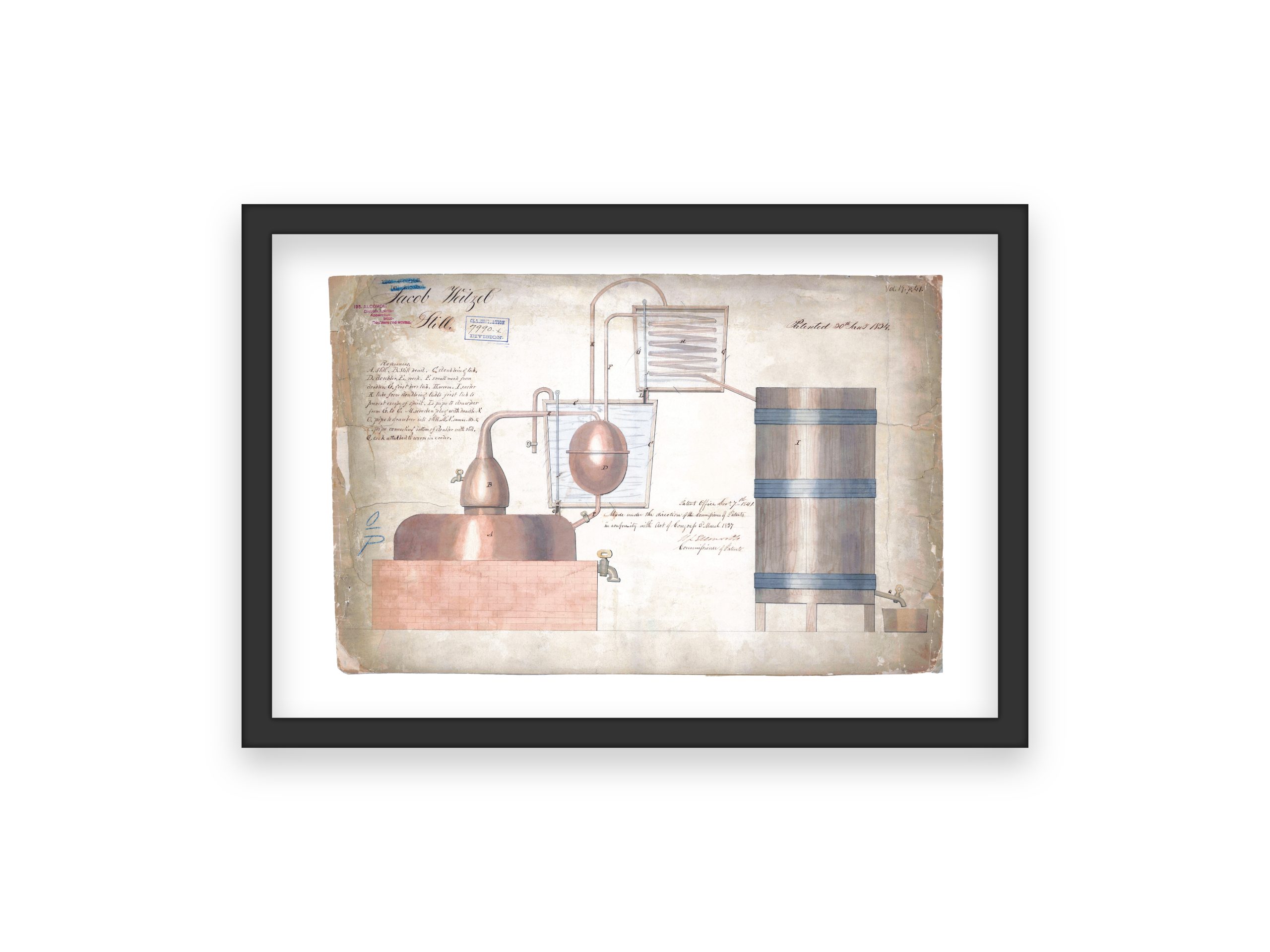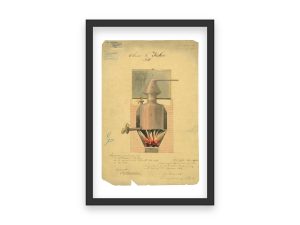Jacob Weitzel’s 1814 Still: An Early American Innovation in Distillation

Patented on June 30, 1814, Jacob Weitzel’s still design emerged during a crucial period of American industrial growth. At a time when the country sought to refine manufacturing processes and expand its agricultural economy, improved distillation methods were essential. Weitzel’s apparatus aimed to produce consistent, high-quality spirits by refining how heat and vapor interacted within the system.
A Technical Overview
Weitzel’s still used a series of copper vessels and connecting pipes to control the distillation process. Heated from below, the primary chamber converted liquid—often fermented mash—into vapor. As this vapor rose and traveled through coils and cooling areas, it condensed back into liquid form with fewer impurities. By carefully managing temperatures and flow rates, the still helped ensure a more uniform product.
Context and Significance
In the early 19th century, reliable distilling equipment benefited farmers, merchants, and emerging industries. By extracting more value from surplus grains or fruit, distillers could create marketable goods that stored longer and transported more easily than raw agricultural products. Patented designs like Weitzel’s represented tangible progress toward systematizing production, improving product quality, and supporting a growing domestic economy.
Influence on Future Designs
While distillation was not new, incremental improvements to stills were vital for the craft’s evolution. Innovations like Weitzel’s informed later equipment and methods, eventually shaping modern distilleries that use more advanced materials and automated controls. Each early patent contributed to a legacy of innovation in food and beverage production, laying groundwork for contemporary standards in efficiency and consistency.
Did You Know?
• Early American distillers often produced whiskey and other spirits from surplus grain, turning perishable harvests into stable commodities.
• Copper became a standard material for stills because it helps remove sulfur compounds, improving the finished spirit’s flavor and aroma.
• Patents like Weitzel’s documented technical progress that other inventors could study, adapt, or improve upon.
This 1814 patent stands as a historical snapshot of American ingenuity, reflecting an era when practical engineering solutions paved the way for more sophisticated industries and markets.
-
 Still Patent Print 1815 – Vintage Distilling Equipment Art, Antique Spirits Decor, Home Bar Wall Art, Distillery Gift Idea, Bar Decor
Still Patent Print 1815 – Vintage Distilling Equipment Art, Antique Spirits Decor, Home Bar Wall Art, Distillery Gift Idea, Bar Decor -
 Alcohol Still Patent Print 1841 – Vintage Distillery Art, Whiskey Decor, Home Bar Gift, Distiller Gift, Liquor Making Patent
Alcohol Still Patent Print 1841 – Vintage Distillery Art, Whiskey Decor, Home Bar Gift, Distiller Gift, Liquor Making Patent -
 Distilling Still Patent Print 1838 – Vintage Distillation Equipment Art, Antique Still Decor, Distillery History Poster, Home Bar Wall Art
Distilling Still Patent Print 1838 – Vintage Distillation Equipment Art, Antique Still Decor, Distillery History Poster, Home Bar Wall Art
